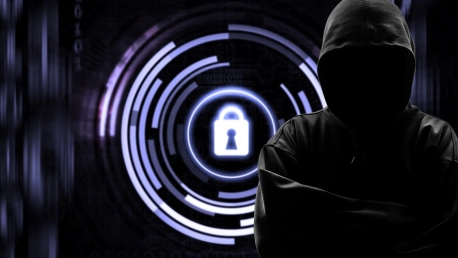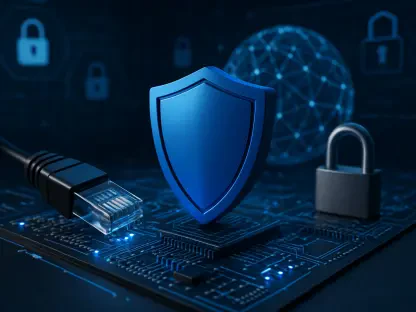In today’s interconnected world, data breaches and cyber-attacks have become increasingly common, often making headline news. One of the recurring themes in many of these breaches is the vulnerability of password-based security. While passwords have been a cornerstone of digital protection for decades, they’ve shown significant weaknesses in the face of evolving cyber threats. This underscores the pressing need to explore and adopt more robust methods of authentication.
Did you know that the United States remains the most highly targeted country, with over 46% of global cyberattacks aimed towards Americans? The limitations of password-based security aren’t unknown. Simple passwords can be easily guessed, while more complex ones are often forgotten by users. Even when they’re complex, passwords are frequently stored or transmitted insecurely. Moreover, with the advent of sophisticated phishing techniques and automated tools that can attempt thousands of password combinations in seconds, relying solely on passwords is akin to locking a digital gold vault with a flimsy padlock.
In this article, we will journey through the fascinating realm of authentication, venturing beyond the domain of mere passwords. We’ll delve into multi-factor authentication, biometric techniques, token-based systems, mobile authentication methods, and even the concept of behavioral authentication. Each of these methods bring strengths and challenges to the table, offering varying degrees of protection tailored to different needs.
Multi-Factor Authentication
As we peel back the layers of the digital security onion, one of the most prominent and widely recommended solutions that comes to light is Multi-Factor Authentication (MFA). At its core, MFA is based on a simple premise: requiring more than one method of authentication from independent categories of credentials. This ensures that even if one factor is compromised, an unauthorized entity would still need to bypass the other layers to gain access. Let’s delve deeper into how MFA reinforces digital defenses and the nuances that define its implementation.
Types of Factors in MFA
When we talk about MFA, we’re essentially referring to the combination of multiple types of “factors” to verify a user’s identity. These factors generally fall into three broad categories:
- Something you know: This could be a password, a PIN, or an answer to a security question. It’s essentially a piece of knowledge that the user possesses and is expected to provide during the authentication process.
- Something you have: This factor is tied to a physical device or object the user has in their possession. Examples include smart cards, hardware tokens, or a mobile phone on which you can receive a one-time passcode via SMS.
- Something you are: This is where biometrics come into play. Fingerprint scanning, facial recognition, and retina scans are examples of biometric methods that rely on the unique physiological or behavioral attributes of an individual.
Benefits of MFA
The beauty of MFA lies in its layered approach. By combining factors from different categories, it becomes exponentially harder for cyberattackers to gain unauthorized access. Even if they have a user’s password (something personal to the user), they would still need to gain possession of the user’s mobile device or replicate their fingerprint to breach the account.
Furthermore, MFA acts as a deterrent. When attackers realize that a system is protected by MFA, they might be discouraged from even attempting a breach, preferring to seek out less fortified targets instead.
Challenges and Considerations
However, like all security methods, MFA isn’t without its challenges. There’s the obvious inconvenience to users, especially if the authentication process is slow or cumbersome. Additionally, if the “something you have” factor gets lost or stolen, it can complicate the authentication process, potentially locking out legitimate users.
Moreover, not all MFA implementations are created equal. For instance, SMS-based one-time passcodes have been criticized due to the potential for SIM swapping attacks or interception of the code.
Endpoint Security Solutions
In the realm of cybersecurity, the endpoints—which refer to individual devices such as computers, smartphones, and tablets—are often the front lines of defense against cyber threats. This is because they serve as access points to an organization’s larger network and are, therefore, prime targets for cyberattacks. While traditional security measures have emphasized safeguarding the network’s perimeter, the evolving nature of cyber threats has made it imperative to also protect these individual endpoints. Let’s dive into the significance of endpoint security and the tools that enable it.
What is Endpoint Security?
Endpoint security is the practice of securing each endpoint, or user device, on a network. This primarily involves safeguarding these devices against potential cyber threats, ensuring they don’t become a gateway for malicious actors to access the network. With the rise of remote work and Bring Your Own Device (BYOD) policies, the perimeter of networks has become increasingly dispersed, amplifying the need for robust endpoint security.
Key Components of Endpoint Security
- Antivirus and Anti-malware Solutions: Perhaps the most basic and well-known tools, these are designed to detect, quarantine, and remove malicious software from an endpoint. They work by regularly scanning devices for known threats and monitoring the behavior of all files for any suspicious activity.
- Endpoint Detection and Response (EDR): EDR solutions monitor endpoint and network events and record information in a central database, where advanced analytical tools scrutinize the data for signs of malicious activity. They offer a more proactive approach, enabling organizations to detect threats in real-time and respond swiftly.
- Application Control: This allows companies to whitelist or blacklist applications, ensuring that only authorized software can run on the endpoints, and thereby limiting the potential points of entry for malware.
- Network Access Control (NAC): NAC solutions determine which devices are authorized to connect to the network. They can enforce security policies, ensuring, for instance, that a device has an up-to-date antivirus before it can access network resources.
- Mobile Device Management (MDM): Especially crucial with the prevalence of BYOD, MDM tools allow organizations to manage and secure employee devices to ensure they adhere to company security policies.
Why Endpoint Security is Essential
Endpoint devices are often the weakest link in the security chain. Given that many cyberattacks, such as phishing, directly target users, an infected endpoint can serve as a launchpad for further incursion into the network. Moreover, with the proliferation of IoT devices and the increasing number of devices per user, the attack surface has expanded considerably.
Endpoint security solutions ensure that these myriad devices don’t become vulnerabilities. By securing every device that connects to the network, enterprises can significantly bolster their overall cybersecurity posture, minimizing the risk of breaches and ensuring data integrity.
However, it’s important to note that endpoint security isn’t a “set it and forget it” solution. Regular updates, continuous monitoring, and user training are essential to adapt to the ever-evolving threat landscape.
Cloud Security: The New Frontier
The migration to cloud platforms has been one of the most significant shifts in the IT landscape over the past decade. While the cloud brings about numerous benefits, such as scalability, flexibility, and cost-efficiency, it also introduces its own set of security challenges. Gone are the days when data resided solely within the confines of an organization’s physical infrastructure. Today, data can be scattered across various cloud environments, making its protection a top priority.
Understanding Cloud Security
Cloud security pertains to the suite of strategies, controls, and technologies designed to protect data, applications, and infrastructure inherent in cloud computing environments. These environments can be public, private, or hybrid, each coming with its own unique set of security considerations. The onus of cloud security often lies both with the cloud service provider and the business using the services.
Key Aspects of Cloud Security
- Data Protection: At its core, cloud security aims to ensure that data—whether at rest or in transit—is protected from unauthorized access, breaches, and leaks. This involves implementing encryption protocols, access controls, and other measures to safeguard data integrity.
- Identity and Access Management (IAM): IAM ensures that only authorized individuals can access cloud resources. This involves setting up user roles, multi-factor authentication, and single sign-on systems.
- Threat Detection and Response: Given the dynamic nature of cloud environments, continuous monitoring for potential threats is essential. This requires deploying security tools that can detect abnormal patterns or behaviors, and alert the necessary teams to take corrective action.
- Security Compliance: Depending on the industry and region, organizations might be subject to various regulatory standards. Cloud security ensures that these standards are met, even when data is stored or processed off-premises.
- Infrastructure Security: Beyond just data, the underlying infrastructure of a cloud environment—servers, databases, networks—also needs protection. This involves securing the virtual machines, ensuring proper network configurations, and regularly patching any software vulnerabilities.
The Shared Responsibility Model
It’s important to highlight the concept of the “shared responsibility model” when discussing cloud security. While cloud providers ensure the security of the infrastructure, often, the responsibility of securing data, applications, and access rests with the user. This distinction is crucial as it underscores the need for enterprises to be proactive in their cloud security measures and not solely rely on their service provider.
In essence, cloud security demands a holistic approach. As organizations continue to leverage the benefits of the cloud, they must also remain vigilant and adapt to the evolving security challenges it presents. Only through a combination of robust security practices and continuous education can they hope to maintain the sanctity of their data and operations in the cloud realm.
Challenges and Concerns with Advanced Authentication Methods
The dawn of the digital era has brought with it a multitude of advancements in authentication methods. From facial recognition to fingerprint scanning, these new-age tools promise enhanced security, minimizing the risks of unauthorized access. However, as with most technological advancements, these methods come with their own set of challenges and concerns that businesses and individuals must address.
Privacy Implications, Especially with Biometrics
Biometric authentication, which includes fingerprint, voice, and facial recognition, among others, offers a high level of security because of its uniqueness to each individual. However, the very feature that makes it so secure—the use of personal physical or behavioral attributes—also raises significant privacy concerns.
When individuals provide their biometric data, they’re essentially sharing a piece of their identity. If this data were to be mishandled, leaked, or misused, it could lead to severe privacy infringements. Unlike passwords, which can be changed if compromised, biometric data is immutable. This makes its protection paramount. Moreover, concerns arise about how this data is stored, who has access to it, and the potential for it to be used for other purposes without the individual’s explicit consent.
The Potential for False Positives or Negatives
No authentication method is flawless, and advanced methods are no exception. The occurrence of false positives (where unauthorized individuals are granted access) or false negatives (where authorized individuals are denied access) is a pertinent concern.
For instance, lighting conditions might affect a facial recognition system, or wear and tear might impact a fingerprint scanner’s accuracy. These inaccuracies not only pose security risks, but can also result in user frustration and decreased trust in the system.
Backup Methods and Recovery When Primary Authentication Fails
Relying solely on advanced authentication methods can be problematic, especially if there are system failures or the aforementioned false negatives. Organizations need to have robust backup methods in place.
However, these backup methods present their own challenges. If, for example, the backup is a traditional password, it might become a system’s weakest link, especially if users relying on biometrics opt for easily guessable passwords. Additionally, the process of recovering or resetting biometric data is not as straightforward as resetting a password. Companies must ensure that their backup and recovery processes are both secure and user-friendly to maintain trust and operational efficiency.
The Bottom Line
As we navigate the complexities of the digital landscape, the importance of robust security measures cannot be overstated. Advanced authentication methods, promising as they are, represent the forefront of our collective efforts to safeguard digital assets and personal information.
Yet, like all pioneering ventures, they come with their share of challenges. It’s essential to recognize that security isn’t a one-size-fits-all solution or a static endpoint, but rather an evolving journey. By understanding and addressing the concerns associated with these modern methods, we can hope to craft a digital world where innovation flourishes without compromising on privacy or security. In this endeavor, being informed, vigilant, and adaptable will be our greatest assets, guiding us towards a safer and more secure digital future.









